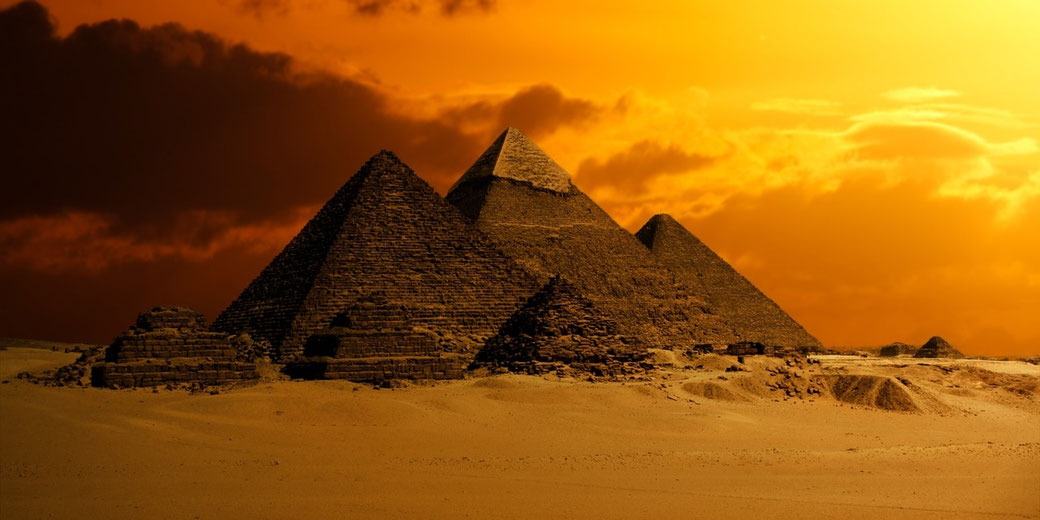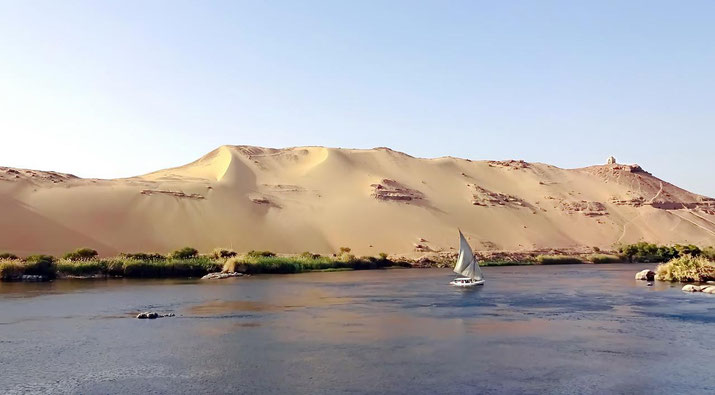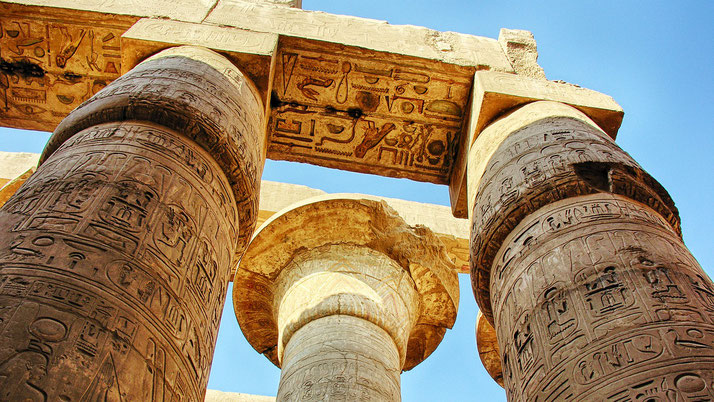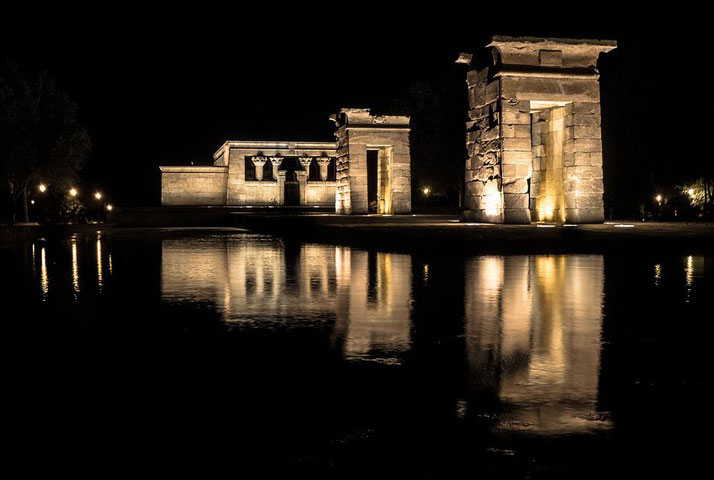Things you must know to understand the mysterious world of Ancient Egypt

Ancient Egypt is one of the most fascinating and well-known civilizations in history. This land, located in northeastern Africa, was home to some of the most impressive achievements in architecture, art and technology of any culture in the ancient world.
The river Nile
The Nile is the most prominent geographical feature of Ancient Egypt. This river, which runs through the length of the country was perfect for farming, and as a result, Ancient Egyptian civilization flourished along its riverbanks.
The Nile was the main reason people were able to live in Egypt long-term in its hot, dry climate.
It provided the Egyptians with food and water, as well as being home to a wide variety of plant and animal life.
The Nile flows from south to north, which is unusual for a major river. This unique trait has had significant implications on the development and structure of ancient Egyptian civilization.
The Nile River originates much further south of Egypt. It is the result of two other rivers, the White Nile and the Blue Nile, joining together.
The two separate rivers that create the Nile both start in the highlands of central Africa.
During the wet season every year, heavy rains in central Africa generates a huge volume of water that rushes down into Egypt via the Nile, create an annual flood called the 'inundation'.
The annual flooding of the Nile deposited nutrient-rich silt on the riverbanks of Egypt.
When the floods receded, the Egyptians were able to grow their crops in this soil and produce significant yields that could feed their population.
The Ancient Egyptians also used this silt to make a type of bricks called "mud bricks."
Mud bricks were commonly used in the construction of homes and other buildings in Ancient Egypt.

The desert
The desert is another major geographical feature of Ancient Egypt. The Sahara Desert covers most of the country.
It is one of the largest deserts in the world and is located to the west of the Nile.
Although the desert was largely uninhabited, there were some oases where people could find water and shelter.
These oases were important stops for traders and travelers crossing the desert.
The Egyptians used the word kemet to describe their country, which means 'black land.'
This is likely a reference to the dark color of the soil along the Nile River, through the Delta region, and the Faiyum.
They then used deshret to describe the desert, which means 'red land.' This is likely a reference to the red color of the desert sand.
The deshret included the areas of the Western and Eastern Deserts, as well as the Sinai.

The 'Two Lands'
Ancient Egyptians referred to their country as the "Two Lands." The first land, called Upper Egypt, was located in the southern part of the country and was home to the ancient Egyptian capital of Thebes.
The second land, called Lower Egypt, was located in the northern part of the country and was home to the ancient Egyptian capital of Memphis.
The terms "Upper" and "Lower" refer to the flow of the Nile, rather than the geographical positions on a map.
Upper Egypt is to the south because it is upriver, while Lower Egypt is in the north because it is downriver.
The most important geographical features of Lower Egypt as the Nile Delta. This region was very fertile and was perfect for agriculture.
The papyrus plant, which was used to make paper, also grew in the Nile Delta.
The pyramids
The most iconic and well-known feature of Ancient Egyptian civilization are the pyramids.
These massive structures were built as tombs for pharaohs and their families. The Great Pyramid of Giza is the largest and most famous pyramid in Egypt.
It is also one of the Seven Wonders of the Ancient World.
Not all pharaohs were buried in pyramids. The pyramid was a specific architectural choice that fell out of favor in later dynasties, with many pharaohs choosing to be buried in elaborate underground tombs in the Valley of the Kings.
The ancient Egyptians believed that in order to achieve immortality, they had to preserve their bodies after death.
To do this, they mummified their dead and placed them inside sarcophaguses in tombs.
The pyramids were designed to protect these sarcophaguses from grave robbers.
The ancient Egyptians believed that when a pharaoh died, he would be reborn into the afterlife.
To prepare for this journey, they placed items that would be useful to him in his tomb, such as food, water and weapons.
They also placed statues of gods inside the tomb to protect him on his journey.
Early history
The first humans began to settle along the Nile from around 5000 BC. At that point in history, separate, small communities developed, but there was no unified empire or culture.
Ancient Egyptian civilization itself is thought to have begun around 3100 BC. This date is based on the first evidence of agricultural activity in the region.
Around this time, the first pharaoh, Narmer (or Menes in Greek), unified Upper and Lower Egypt into one country.
He established the capital of Ancient Egypt at Memphis.
For the next three thousand years, Ancient Egyptian civilization flourished. The Ancient Egyptians built great pyramids, temples and monuments.
They also made advances in art, literature, mathematics and astronomy.

The three kingdoms
The history of Ancient Egypt is divided into three periods, known as 'kingdoms': The Old Kingdom, Middle Kingdom and the New Kingdom.
Between each of these kingdoms were times of civil war called 'intermediate periods'.
Intermediate periods were when there was no clear ruler over all of Egypt, and many local warlords fought for control.
The state of war often meant that Egypt lost a lot of its income from trade, leading to periods of poverty and even famine.
The Old Kingdom (c. 2686-2150 BC) is considered by many to be the Golden Age of Ancient Egypt.
This period was marked by the construction of the three great pyramids at Giza by the pharaohs Khufu, Khafre, and Menkaure.
The Middle Kingdom (c. 2055-1650 BC) was a time of stability and prosperity after a period of upheaval during the First Intermediate Period (2150-2055 BC).
The city of Thebes became an important religious centre during this time. One of the most famous Pharaohs from this period is Amenemhat III (1849-1797 BC).
The New Kingdom (c. 1550- 1070 BC) was the most powerful period of Ancient Egyptian civilization. Pharaohs such as Hatshepsut (1479-1458 BC), Thutmose III (1458-1425 BC), Akhenaten (1353-1336 BC) and Ramses II (1279-1213 BC) expanded Egypt's territory and influence greatly during this time.
The New Kingdom came to an end with the death of Ramses III. After his death, Egypt fell into a state of decline. It was conquered by a series of foreign powers, including the Assyrians, the Babylonians and the Persians.
In 332 BC, Alexander the Great conquered Egypt and established the city of Alexandria.
This ended the period of Ancient Egyptian civilization and ushered in a new era known as the Ptolemaic Kingdom (332-30 BC).
The Ptolemaic Kingdom was ruled by a dynasty of Greek rulers who were descended from Alexander the Great's general, Ptolemy I Soter (367-283 BC).
The most famous ruler of this period was Cleopatra VII (69-30 BC), who was the last pharaoh of Egypt.
In 30 BC, Rome conquered Egypt and it became a province of its growing empire. Ancient Egyptian civilization came to an end, but its legacy has lasted for thousands of years.
Dynasties
The 3rd century BC ancient Greek historian, Manetho, divided each of the three kingdoms in 'dynasties'.
A dynasty was a succession of rulers from the same family. A dynasty could come to an end when the last Pharaoh of that dynasty died without an heir.
However, a dynasty didn't always end when a pharaoh died without an heir; sometimes a dynasty could end due to invasion, internal conflict, or other factors.
The Old Kingdom was divided into the Third, Fourth and Fifth Dynasties. The Middle Kingdom was divided into the Eleventh and Twelfth Dynasties.
The New Kingdom was divided into the Eighteenth, Nineteenth and Twentieth Dynasties.
The Old Kingdom ended with the Sixth Dynasty (2345-2150 BC) when the last Pharaoh, Pepi II, died without an heir.
This ushered in the First Intermediate Period (2150-2055 BC).
In a similar way, the Middle Kingdom came to an end with the Twelfth Dynasty (1985-1773 BC) when Amenemhat IV (r. 1775-1773 BC) died without an heir.
The Thirteenth Dynasty (1773-1650 BC), which followed was marked by instability and decline.
Further reading
What do you need help with?
Download ready-to-use digital learning resources
Copyright © History Skills 2014-2024.
Contact via email
With the exception of links to external sites, some historical sources and extracts from specific publications, all content on this website is copyrighted by History Skills. This content may not be copied, republished or redistributed without written permission from the website creator. Please use the Contact page to obtain relevant permission.






